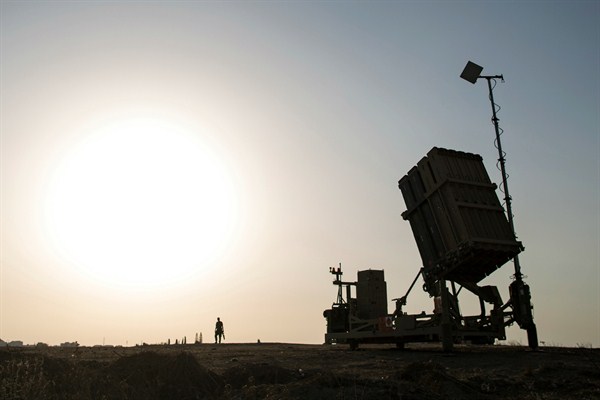In October, it was revealed that Bahrain and perhaps other oil-rich Arab states of the Gulf Cooperation Council (GCC) were in talks with Israel over the purchase of its highly successful and relatively inexpensive Iron Dome air defense system. The news came in the wake of both the Iran nuclear deal and reports that Iran may have tested a more advanced, medium-range ballistic missile capable of delivering a nuclear warhead, violating U.N. Security Council Resolution 1929. While there are obvious correlations to be drawn with developments in Iran, the Iron Dome purchase is much more a reflection of shifting regional dynamics than of the growing threat of Iranian missile attacks in the Gulf.
Iron Dome is just one component of Israel’s multilayered missile defense, which also includes the David’s Sling and Arrow systems. Iron Dome was designed principally to defend Israeli cities against short-range rocket attacks and artillery and mortar fire, mainly by Hamas from the Gaza Strip but also by Hezbollah from Lebanon. Small batteries track incoming projectiles and then guide the Tamir interceptor missile toward the targets at ranges of about 2.5 to 43 miles. The system then seeks to either destroy the shell or rocket or to knock it off course with blast fragments by detonating its payload nearby. Over the past few years the system has had a very impressive record, destroying or diverting 90 percent of incoming projectiles.
However, Iron Dome has not been designed to combat more sophisticated threats and would therefore have very limited utility against either a conventional Iranian ballistic missile attack or a possible future nuclear threat. It is principally an air-defense—rather than missile-defense—system: Mortar fire, rockets and artillery are much easier to track and intercept than ballistic missiles, such as the Emad missile that Iran said it tested in October. That is why Israel, along with other states, deploys a range of defensive systems to meet these different threats. Iron Dome could potentially be combined with other systems under a U.S.-led plan for an integrated GCC missile shield, which could provide a far greater missile defense capability in the future—but that project remains in its infancy.

